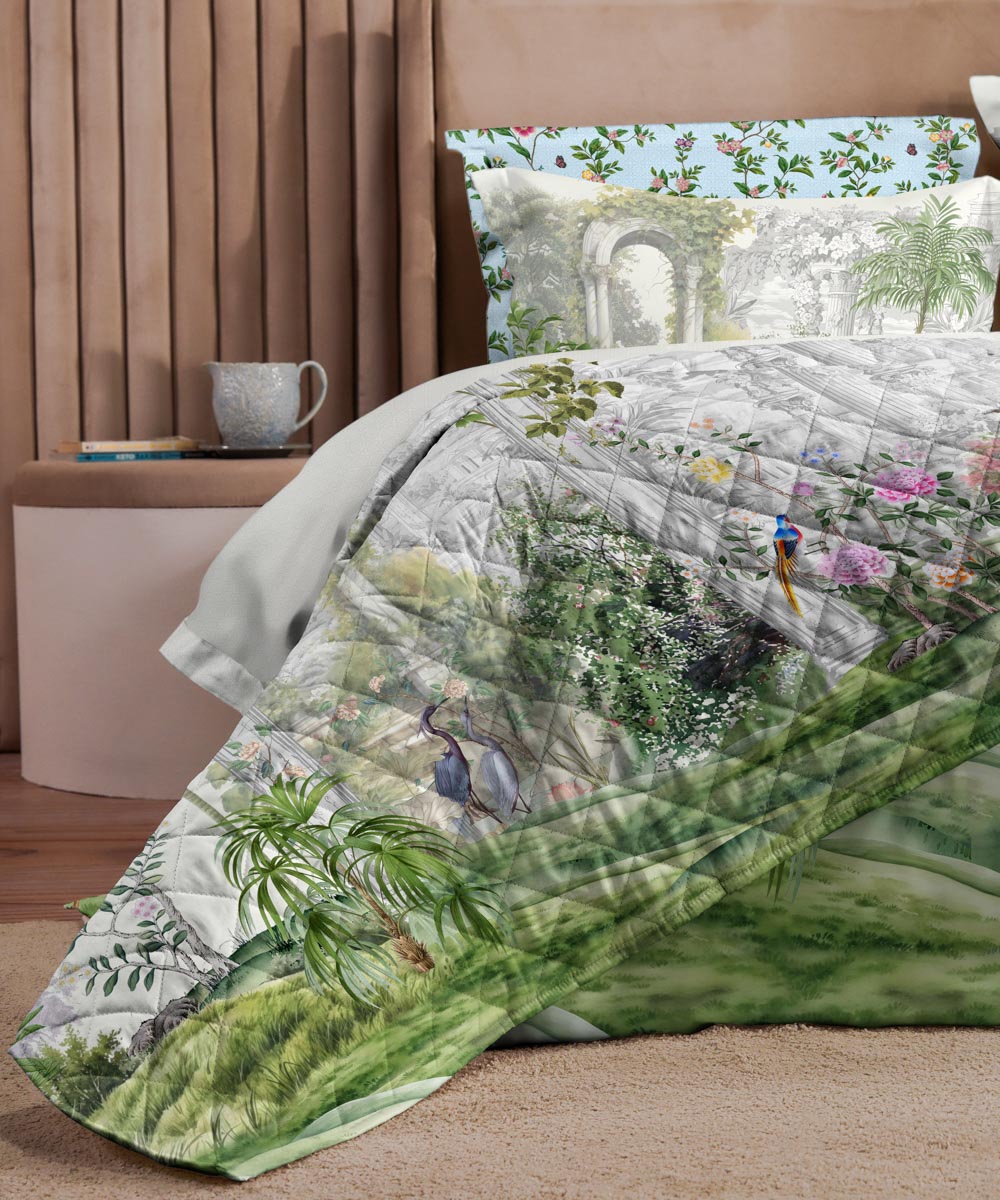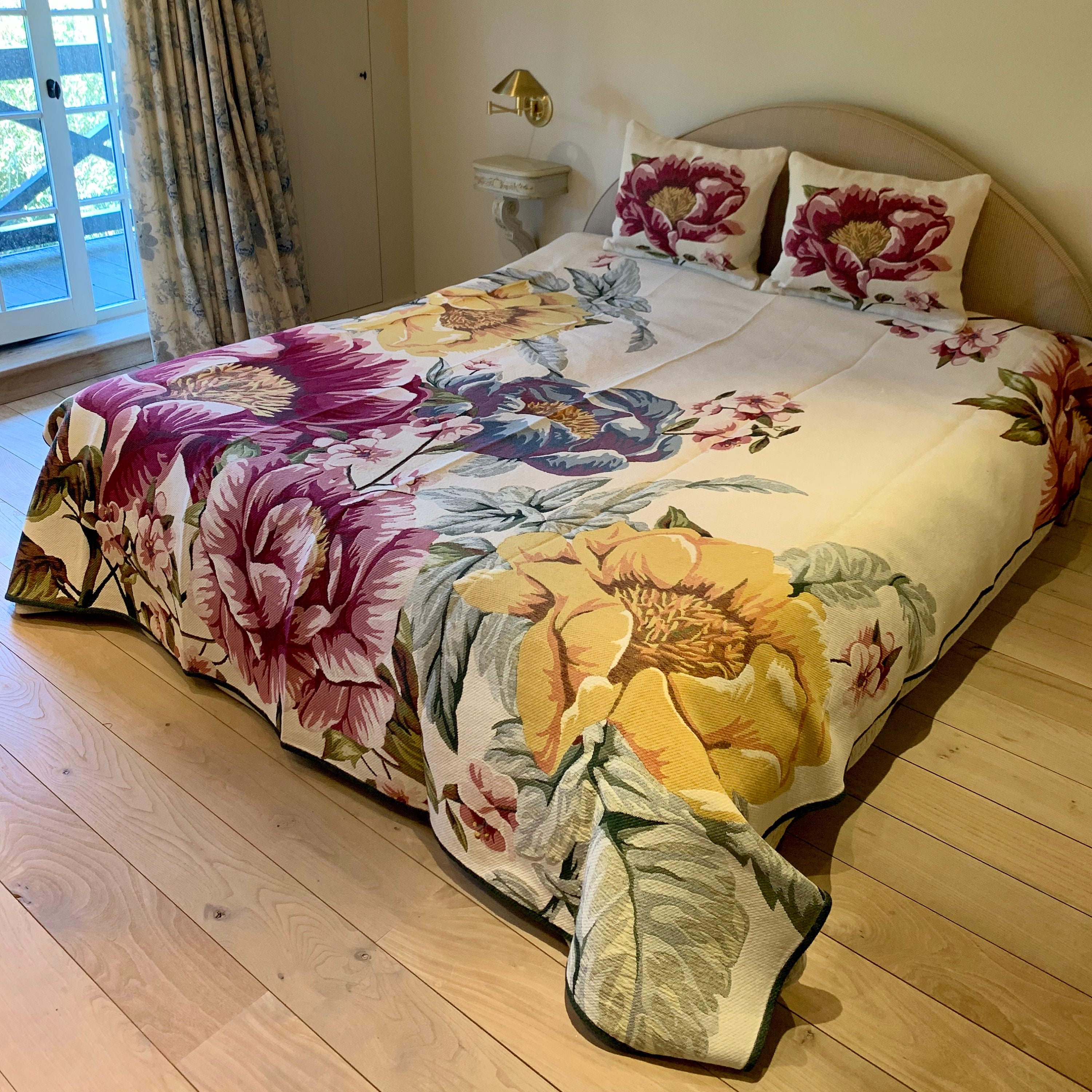Change Your Room Visual with Elegant Bed Spread and Cozy Flat Sheet Pairings
Wiki Article
The Ultimate Guide to Caring for Your Home Textile Linens for Longevity and Style
Caring for home fabric linens is important not just for preserving their visual charm but additionally for ensuring their long life. As we check out these aspects, it ends up being evident that a couple of informed choices can lead to remarkable advantages-- discover the nuanced methods that can change your technique to home fabrics.
Picking the Right Fabrics
Selecting the ideal materials for home textile linens is crucial to accomplishing both aesthetic allure and practical toughness. The option of textile significantly affects the general ambiance of a room while also establishing the durability of the linens. Usual material options include cotton, polyester, and bed linen, each offering distinctive features.Cotton is renowned for its soft qualities, breathability, and simplicity of treatment, making it a popular selection for bed linens and cooking area textiles. Bed linen, stemmed from the flax plant, offers a rustic appeal and exceptional moisture-wicking properties, suitable for hot climates. Nonetheless, it is prone to wrinkling, which can be a factor to consider for those looking for a polished look.
When selecting materials, think about the designated usage, environment, and individual style preferences. Eventually, a thoughtful choice of materials not only boosts the design of your home textiles but likewise ensures they remain useful and aesthetically appealing for years to come.
Laundering and Drying Strategies
Proper washing and drying out strategies are important for maintaining the high quality and durability of home textile linens. First, constantly describe the treatment labels on your linens, as they provide specific guidelines customized to the material type. Make use of a mild detergent that is totally free of harsh chemicals to preserve the honesty of the fibers. When cleaning, go with chilly or warm water, as hot water can result in contraction and fading.For cleaning device usage, choose the fragile cycle to decrease frustration, which can deteriorate the fabric. Think about positioning them in a mesh laundry bag for added protection if you are cleaning especially fragile things. Avoid congestion the machine, as this can stop extensive cleansing and rise wear.
When it involves drying out, air drying out is preferable for the majority of fabrics, as it helps keep form and color. If using a dryer, select a low heat setup and get rid of linens while they are a little moist to reduce wrinkles (flat sheet). Constantly avoid direct sunlight for drying, as UV rays can cause fading. By sticking to these washing and drying methods, your home textile linens will certainly preserve their beauty and performance in time.

Stain Elimination Strategies
When it concerns keeping the pristine look of home fabric linens, efficient discolor elimination approaches are important. Spots can take away from the visual allure and long life of your linens; therefore, proper and prompt activity is important.First, identify the sort of tarnish, as various materials call for distinctive treatments. For natural stains like red wine or fruit juice, blot the area gently with a tidy fabric to absorb excess liquid, after that use a mixture of mild detergent and water. For oil discolorations, sprinkle cooking soft drink or corn starch on the location to absorb the oil before laundering.
Constantly evaluate any discolor removal option on an unnoticeable area of the fabric to ensure it does not trigger staining. For protein-based spots, such as blood or sweat, cold water is better, as warm water can establish the stain.
For consistent spots, consider making use of a commercial tarnish remover, yet follow the producer's guidelines meticulously. After therapy, wash the linens based on the treatment label directions and air dry when possible to avoid warm setting. By executing these methods, you can maintain the charm and honesty of your home fabric linens for years to come.
Proper Storage Space Approaches
Efficient storage space techniques are important for protecting the quality and long life of home textile linens. Correct storage begins with guaranteeing that bed linens are extensively dry and clean before being put in storage space. This prevents mold and mildew, which can take place in wet problems.Use breathable material storage space bags or cotton sheets to cover bed linens, as these products allow air flow while safeguarding against dirt and parasites - flat sheet. Avoid utilizing plastic bags, as they can trap wetness and cause wear and tear gradually. Additionally, it is suggested to keep bed linens in a dark, awesome, and dry environment, as exposure to sunshine can create fading and damage fibers
For optimal organization, fold bed linens nicely and stack them according to size and use regularity. When required, this not only maximizes area however also makes it simpler to accessibility things. When keeping larger items, such as blankets or tablecloths, take into consideration rolling them as opposed to folding to decrease folds. Include lavender sachets or cedar blocks in storage areas to hinder insects and pass on a positive scent. Implementing these proper storage approaches will certainly guarantee that your home fabric linens continue to be in beautiful problem for years ahead.
Enhancing Long Life With Care
Keeping the high quality of home fabric linens needs a thoughtful technique to care that extends their life-span and preserves their appearance. Routine cleaning is important; nevertheless, it is important to follow certain guidelines tailored to the material kind. Natural fibers like cotton and bed linen can usually stand up to greater temperatures during drying out and cleaning, while artificial materials call for gentler handling to stay clear of damages.
Post-wash, it is advisable to air completely dry bed linens whenever feasible, as excessive warmth from dryers can compromise fibers. Use a reduced warmth setup and remove bed linens while a little damp to minimize wrinkles. if maker drying is essential.
Frequently checking linens for indications of wear, such as fraying or staining, enables timely repair services, lengthening their use. Revolving the use of bed linens can disperse put on equally, making sure that no single item births the brunt of everyday use. By executing these treatment methods, you can improve the longevity of your home fabric linens while maintaining their aesthetic allure.
Final Thought
To conclude, the mindful choice of quality textiles, adherence to proper cleaning and drying out techniques, reliable stain elimination methods, and suitable storage space approaches dramatically add to the longevity and visual charm of home fabric linens. Routine maintenance and examination for wear further enhance their toughness and performance. By executing these techniques, individuals can make certain that home fabrics continue to be not only attractive but additionally resistant, satisfying both functional demands and style choices gradually.Caring for home textile linens is essential not just for maintaining their visual appeal but also for ensuring their durability.Selecting the suitable fabrics for home fabric bed linens is essential to linen curtains achieving both visual appeal and practical durability.Appropriate washing and drying out methods are vital for maintaining the quality and long life of home textile linens. By adhering to these washing and drying out methods, your home fabric bed linens will certainly maintain their beauty and functionality over time.
In verdict, the cautious selection of high quality textiles, adherence to appropriate washing and drying techniques, effective tarnish removal strategies, and proper storage techniques dramatically add to the durability and visual allure of home textile linens.
Report this wiki page